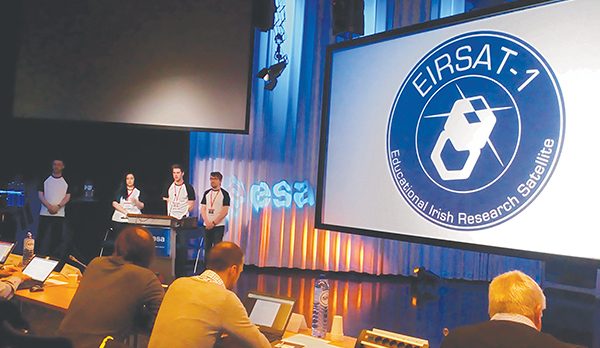
Pictured Top: Some of the team who will be working on the project. Courtesy of Lorraine Hanlon.
A team at University College Dublin is to lead the launch of the satellite formally called Educational Research Satellite-1.
The European Space Agency (ESA), has selected the cube shaped satellite to be developed under the ESA Education Office, Fly Your Satellite 2017 education programme. The satellite will be launched from the International Space Station to join a host of other technology orbiting our earth and will collect data on gamma-rays for 12 months.
The Irish team will also collaborate with Queen’s University Belfast and five other Irish companies: Resonate Ltd, ENBIO, SensL, Parameter Space and MOOG Dublin. The aim of the project is to provide teaching and training opportunities for graduates and undergraduates in engineering, physics and space sciences. Hopefully it will also serve to inspire more students to think about studying STEM subjects and to develop growth in the Irish space sector by supplying highly skilled workers.
Dr Ronan Wall of MOOG Dublin and team leader of the satellite project has said: “Irish Space exports are estimated at €80 million in 2016 – providing at least 4:1 return on State investment in ESA – and we believe that this project will help us take that return to the next level.”
Professor Lorraine Hanlon from UCD School of Physics is the overall project leader. If the satellite passes regulatory tests it will be managed from a ground station at UCD and Prof. Hanlon expects it to have excellent training and research opportunities: “Although the UCD Space Science group works on fundamental research questions in astrophysics, the technology we have developed has wider applications in space, medicine and security. We can never really imagine when we start new research projects where our ideas will take us – that is especially true in this case. Despite its small size, EIRSAT-1 will detect the biggest explosions since the Big Bang and pave the way for future space science missions.”
By Jessica Ellis



